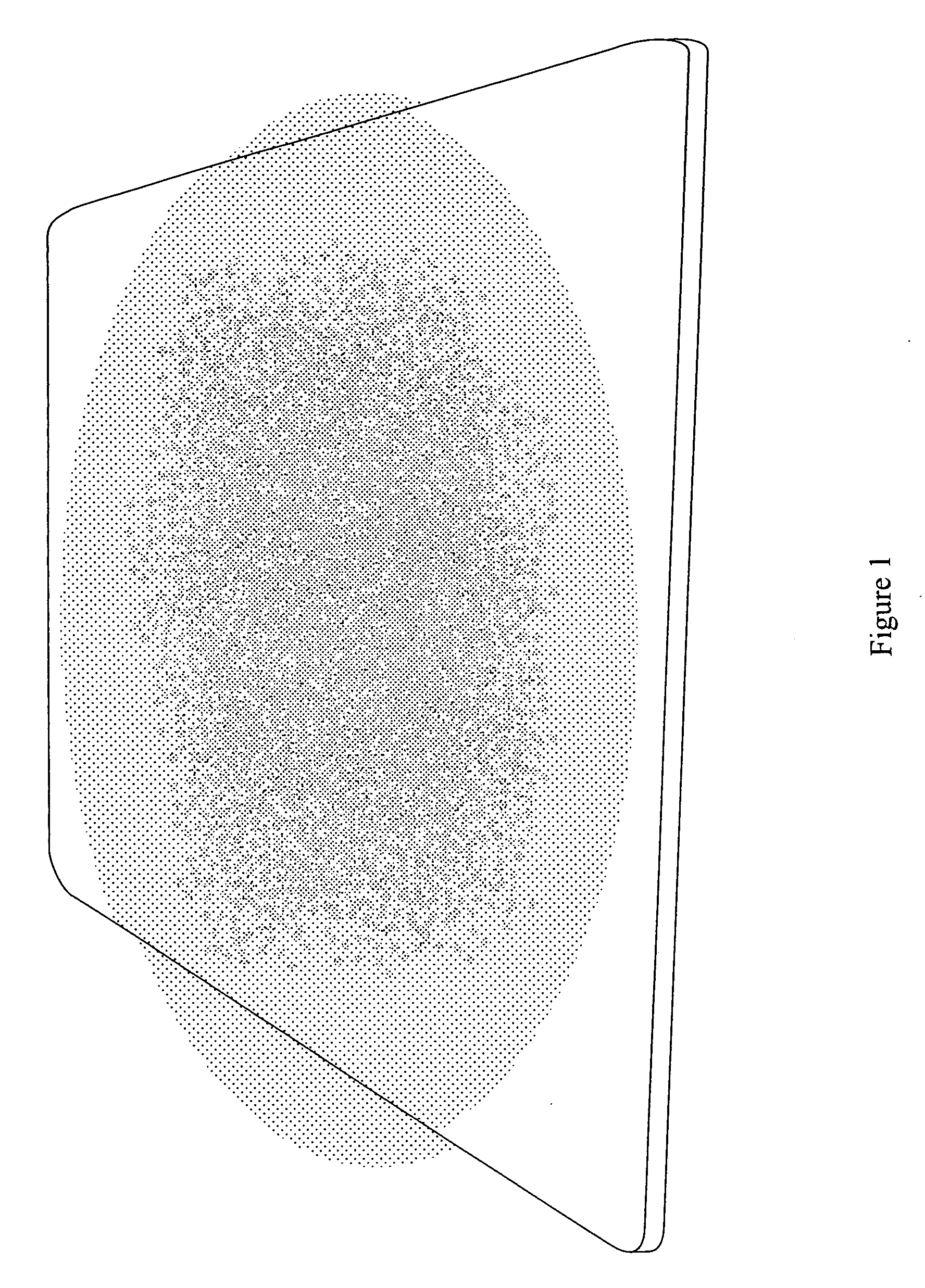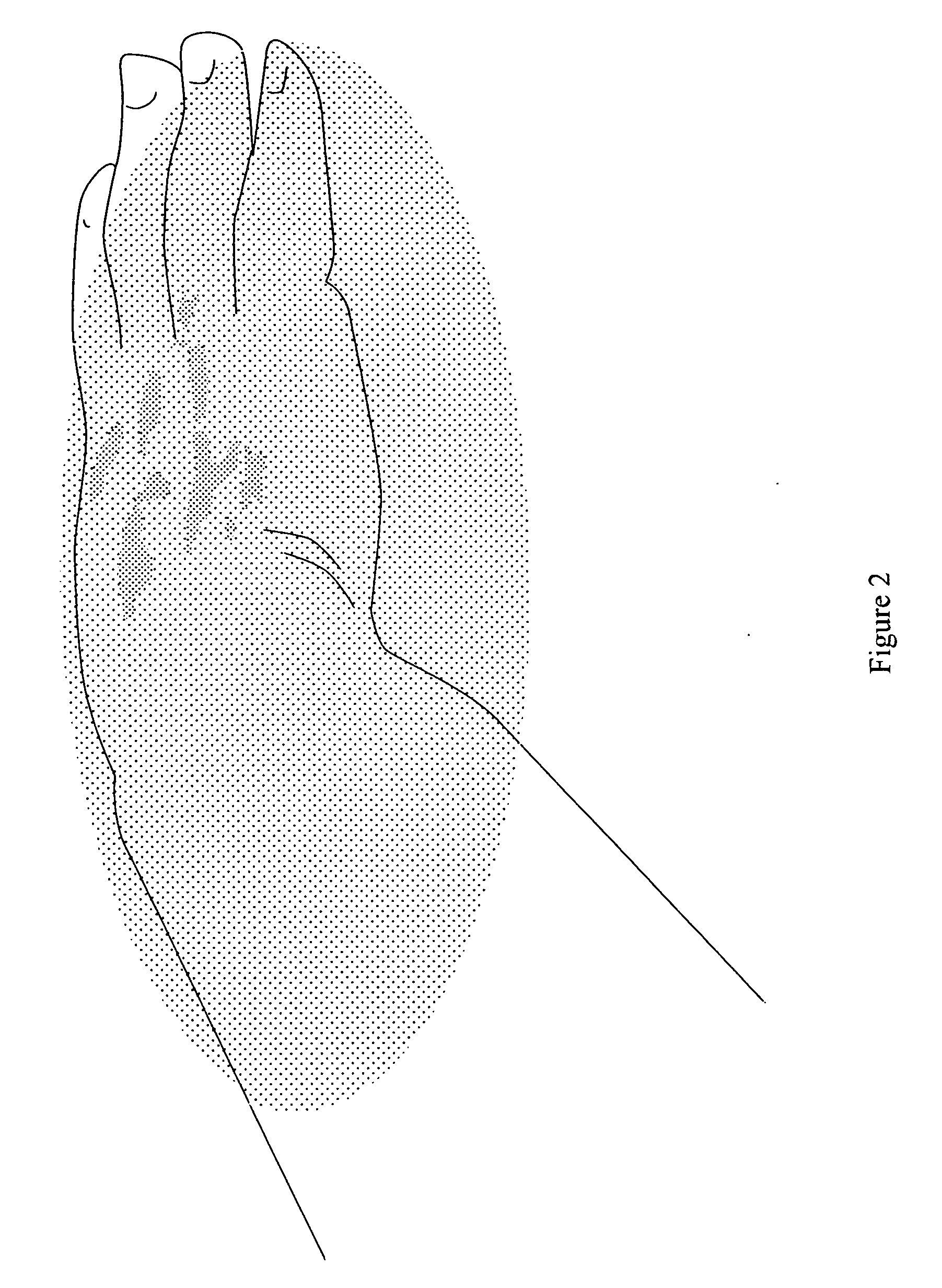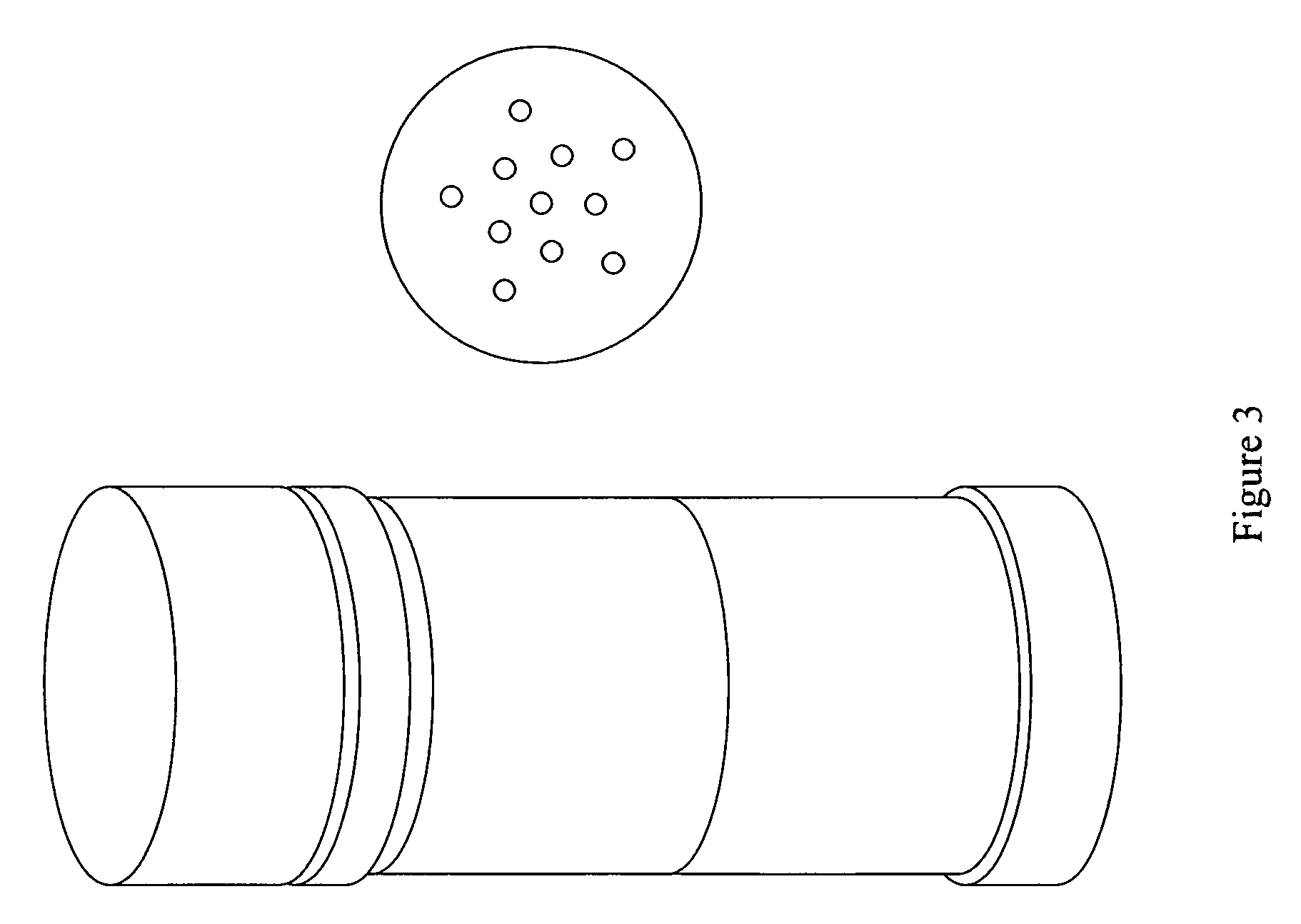Simulant of Radiological Contamination
a radiological contamination and simulation technology, applied in the direction of organic dyes, educational models, conductive materials, etc., can solve the problems of safety and simulant fidelity pertaining to safe human exposure, unresolved, fluorescent material should not be readily removed from the simulant, etc., to achieve safe and convenient operation, transport and spread of the simulant, and high fidelity characteristics
- Summary
- Abstract
- Description
- Claims
- Application Information
AI Technical Summary
Benefits of technology
Problems solved by technology
Method used
Image
Examples
Embodiment Construction
[0023]The simulant composition comprises particulate of a partially hydrated silica gel with a small admixture of fluorescent food dye or other non-toxic fluorescent taggant. Silica gel provides a hydrophilic surface that can readily sorb water and water soluble salt. As a desiccant, commercially available silica gel has an effective surface area in the range of approximately 600 to 800 m2 / g. Aqueous solutions are readily adsorbed. Typically, such a desiccant can sorb water up to 40% of the dehydrated gel weight. Consequently, the fluorescent material can be sorbed into the gel. Further, as described below, the silica gel provides a particulate matrix that has comparable properties to radiological contamination.
[0024]Contamination may arise as a consequence of a nuclear explosion, for example, the detonation of a fission or fusion device, as a release from a nuclear facility or during the transport of radioactive materials, or as the result of intentional radiological dispersal, for...
PUM
| Property | Measurement | Unit |
|---|---|---|
| diameter | aaaaa | aaaaa |
| particle size | aaaaa | aaaaa |
| water content | aaaaa | aaaaa |
Abstract
Description
Claims
Application Information
 Login to View More
Login to View More - R&D
- Intellectual Property
- Life Sciences
- Materials
- Tech Scout
- Unparalleled Data Quality
- Higher Quality Content
- 60% Fewer Hallucinations
Browse by: Latest US Patents, China's latest patents, Technical Efficacy Thesaurus, Application Domain, Technology Topic, Popular Technical Reports.
© 2025 PatSnap. All rights reserved.Legal|Privacy policy|Modern Slavery Act Transparency Statement|Sitemap|About US| Contact US: help@patsnap.com



